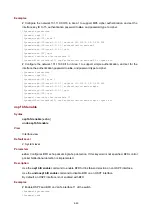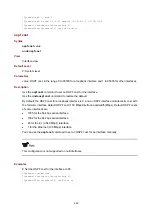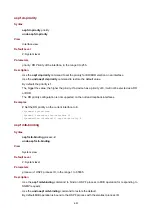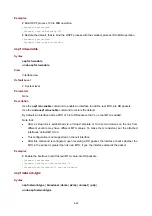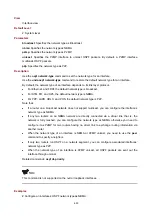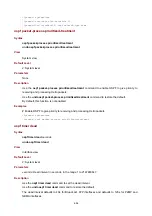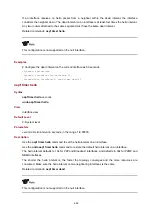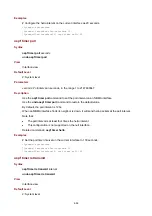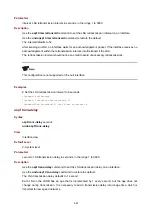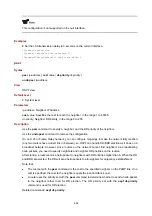
4-59
Examples
# Specify the neighbor 1.1.1.1.
<Sysname> system-view
[Sysname] ospf 100
[Sysname-ospf-100] peer 1.1.1.1
preference
Syntax
preference
[
ase
] [
route-policy
route-policy-name
]
value
undo preference
[
ase
]
View
OSPF view
Default Level
2: System level
Parameters
ase
: Sets a preference for ASE routes. If the keyword is not specified, using the command sets a
preference for OSPF internal routes.
route-policy route-policy-name
: References a route policy to set priorities for specified routes. A
r
oute-policy-name
is a string of 1 to 19 characters.
value
: Priority value, in the range 1 to 255. A smaller value represents a higher preference.
Description
Use the
preference
command to set the preference of OSPF routes.
Use the
undo preference
command to restore the default.
The preference of OSPF internal routes defaults to 10, and the preference of OSPF external routes
defaults to 150.
If a route policy is specified, priorities defined by the route policy will apply to matching routes, and the
priorities set with the
preference
command apply to OSPF routes not matching the route policy.
A router may run multiple routing protocols. When several routing protocols find routes to the same
destination, the router uses the route found by the protocol with the highest preference.
Examples
# Set a preference of 200 for OSPF external routes.
<Sysname> system-view
[Sysname] ospf 100
[Sysname-ospf-100] preference ase 200
reset ospf counters
Syntax
reset ospf
[
process-id
]
counters
[
neighbor
[
interface-type interface-number
] [
router-id
] ]
View
User view





